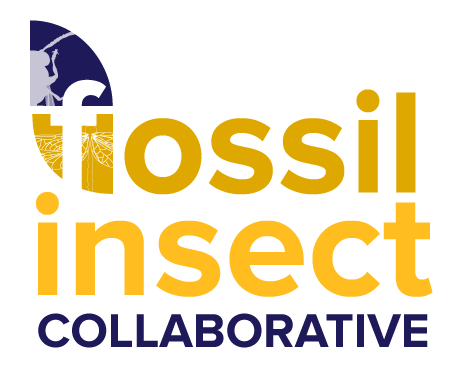-
Dominican Amber - Hymenoptera
https://fossilinsects.colorado.edu/wp-content/uploads/slideshow-gallery/azteca-ant.jpgAnts may be distinguished from other hymenoptera by at least one additional constriction between their thorax and abdomen, with a small swollen area in between.
-
Dominican Amber - Hymenoptera
https://fossilinsects.colorado.edu/wp-content/uploads/slideshow-gallery/unknown-wasp-right-lateral-view-copy.jpgParasitic wasps are among the smallest of all insects. It helps to be small if you’re going to lay an egg on or in an unsuspecting insect!
-
Dominican Amber - Unknown Filaments
https://fossilinsects.colorado.edu/wp-content/uploads/slideshow-gallery/unknown-filaments-copy.jpgNot all trees produce resin which can become amber. Most amber deposits are derived from a select number of gymnosperm families, or from the legume family among the flowering plants.
-
Dominican Amber - Unidentified Larvae
https://fossilinsects.colorado.edu/wp-content/uploads/slideshow-gallery/unidentified-larva2.jpgA larval stage can live with a different diet, body type, and at a different time of year compared to an adult. This is thought to be an important component of the incredible success of insects that undergo complete metamorphosis.
-
Dominican Amber - Unidentified Larvae
https://fossilinsects.colorado.edu/wp-content/uploads/slideshow-gallery/unidentified-larva-copy.jpgThe cuticle of most insect larvae is soft and easily decomposed. Thus, they are a rare find in the fossil record.
-
Dominican Amber - Araneae
https://fossilinsects.colorado.edu/wp-content/uploads/slideshow-gallery/spider.jpgSpiders, unlike insects, do not have enough components to their mouthparts to efficiently chew their food, and they liquefy and drink their prey instead. Some insects, like robber flies and water bugs, have modified their mouthparts to suit this feeding style.
-
Dominican Amber - Hymenoptera
https://fossilinsects.colorado.edu/wp-content/uploads/slideshow-gallery/proplebeia-10031dorsal.jpgProplebeia are in the same family as honey bees and have relatives that are alive and well today, known as stingless bees. Stingless bees like Plebeia might not sting intruders, but they can definitely bite!
-
Dominican Amber - Diptera
https://fossilinsects.colorado.edu/wp-content/uploads/slideshow-gallery/possible-midge-copy.jpgAmber is not necessarily a perfect preservation medium. Many things can happen to an entrapped organism over the course of millions of years. In this case, a fly has been perfectly molded, even though the body rotted away.
-
Dominican Amber - Lepidopsocidae (Psocoptera)
https://fossilinsects.colorado.edu/wp-content/uploads/slideshow-gallery/order-psocoptera-family-lepidopsocidae-genus-echmepterys-copy.jpgDistantly related to the more familiar parasitic groups of lice, the winged barklice are decomposers, content to live outdoors and away from people.
-
Dominican Amber - Scatopsidae
https://fossilinsects.colorado.edu/wp-content/uploads/slideshow-gallery/mating-scatopsid-flies10088.jpgFossilized behavior is always an interesting study point for paleontologists. It is unusual to capture mating insects, but many fossil flies have met their doom while courting: lake shales in particular may be filled with males and females of the same species.
-
Dominican Amber - Mammalian Hairs
https://fossilinsects.colorado.edu/wp-content/uploads/slideshow-gallery/mammalian-hairs10033.jpgInsects and spiders aren’t the only animals that can be captured in amber. Anything living on the right tree, or even just passing by, can be preserved in whole or in part.
-
Dominican Amber - Sciaridae
https://fossilinsects.colorado.edu/wp-content/uploads/slideshow-gallery/fungus-gnat.jpgAlthough amber is a sterile preservation medium, any microbes an insect brings with it can still decompose it. This gnat appears to have been infected with fungal threads after it fell into the amber
-
Dominican Amber - Orthoptera
https://fossilinsects.colorado.edu/wp-content/uploads/slideshow-gallery/electrotettix-face-shot-copy.jpgThe bubbles around this grasshopper could be released decay gasses, or could have been entrained while the insect tried (but failed) to escape from the sap.
-
Dominican Amber - Coleoptera
https://fossilinsects.colorado.edu/wp-content/uploads/slideshow-gallery/coleoptera10050-copy.jpgNot surprisingly, many insects that get trapped in amber live in and around trees, just like the bark beetle depicted here.
-
Dominican Amber - Ceratopogonidae
https://fossilinsects.colorado.edu/wp-content/uploads/slideshow-gallery/ceratopogonidaebiting-midge.jpgThe individual antennal segments on insects, beyond the first two, are called flagellomeres, and on biting midge males they usually bear many long setae. These are sensitive to the wing beat frequencies of females.
-
Dominican Amber - Ceratopogonidae
https://fossilinsects.colorado.edu/wp-content/uploads/slideshow-gallery/ceratopogonidaebiting-midgefull-shot-copy.jpgDespite their name, not all biting midges bite. Ceratopogonidae, also called punkies, count the stout black flies and elongate midges among their closest relatives
-
Dominican Amber - Hymenoptera
https://fossilinsects.colorado.edu/wp-content/uploads/slideshow-gallery/unknownwasp-left-lateral.jpgAs fine as the hairs on this wasp are, amber has been known to preserve much more delicate features. Sub-cellular details of three-dimensional muscles are known from insects in amber.
